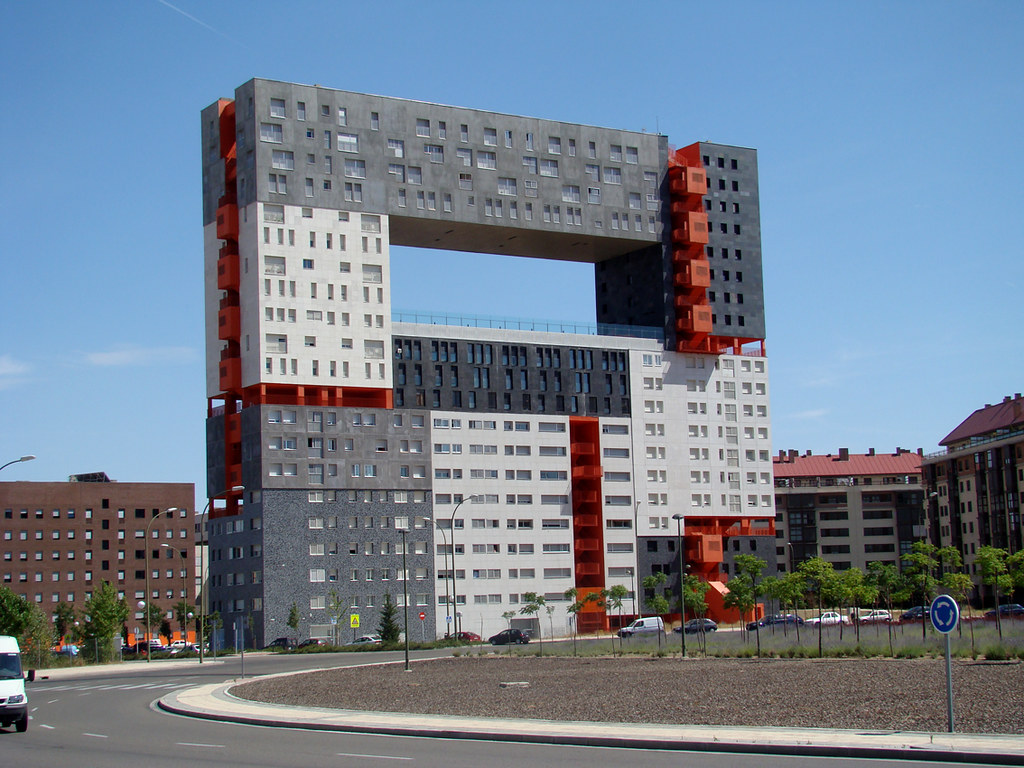Leisure • Art/Architecture
Buildings That Give Hope – and Buildings That Condemn Us
A strange and rarely remarked upon feature of buildings is that they talk. They don’t necessarily speak very loudly, it can sometimes just be a whisper, but if you go up to them and look at them properly, you can definitely hear them chatting.
Here’s the Mauritshuis, a museum in the Hague completed in the classical style in the early nineteenth century. Partly this building likes to talk about itself:
I’m dignified and stately. I place great emphasis on manners. I aspire to be calm and rational, but I hope not to be cold. I like to leave a place for sweetness and tenderness. How are you feeling?

Mauritshuis, The Hague, Netherlands, 1822
Sometimes a building likes to chat about its view of the world more broadly. This is more from the Mauritshuis:
It’s good to remember your ancestors because that helps to root you in time. We’re just one tiny moment in an incredibly long story. So many challenges have been overcome. Keeping history in mind acts as a buffer against the agitation of the present. I’ve got some Ancient Greek and Roman relatives.
Let’s listen to another very different building, the Villa Savoye built in a suburb of Paris by the Swiss architect Le Corbusier in 1930:
I’m from the future. I’ve had enough of tradition and the boring status quo. Recently, I journeyed in from another galaxy and settled nimbly in a pristine field. Stay with me and together we’ll invent a new, better way of life.

Le Corbusier, Villa Savoye, Passy, France, 1930
Of course, not every building talks to us in an especially pleasant voice. Some of them can be shouty or impatient. They can be bit like those people we meet who don’t look us in the eye, don’t register our mood and don’t ask us anything about ourselves. In a suburb of Madrid, there’s a large residential block put up by a team of Dutch architects that speaks very dramatically.
Hi kids, I’m not necessarily your age any more but I’m certainly up for some fun! Do you like my new sneakers? I’m so bored with convention. Let’s shake it up a bit, out with the old, in with the wild! Dancing anyone?

MVRDV architects, Mirador Building, Madrid, Spain, 2005
And then there are buildings that speak with true aggression. They seem to lock onto any insecurities we might have about ourselves, any worries we might harbour about the future and our capacity to get through it, and they will say things that are sure to collapse our mood.
Hope? You’ve got to be kidding. There’s no hope. You’re a little idiot and everything you do turns to rubbish. You might as well give up. Go away and die, crybaby.

The problem with buildings is that they have a great influence over our self-conception. Very often, we don’t have a settled sense either of our value or of the stability and goodness of society. On a good day, things can feel tolerable; we have a measure of confidence in ourselves and faith in our fellow humans. But on others, we sense our mood dropping. We are anxious and guilty, we don’t feel very well disposed towards who we are; we wonder whether other people aren’t simply cruel and out to get us.
Crucially for our state of mind, it’s the architecture that can help to push us either in a positive or a negative direction; it’s what buildings happen to be speaking about that holds one of the great keys to our mental stability. In a street that speaks of forgiveness, gentleness and modesty, the world can feel benevolent; we can be at ease and ready to be kind to ourselves. But if we’re stuck for too long in other environments, the external world starts to amplify the worst lines of our inner world. There are streets that talk to us sharply about shame, about being a nobody, about our life being valueless, about only money and success counting: these are some of the forbidding messages that can be articulated by doors and windows, building volumes and cladding materials.
It shouldn’t matter, but it tends to. Few of us are so impermeable to the voices of the streets that we don’t get lastingly affected. That’s why we ache for certain districts that can respect and like us – and are so scared of the remorseless negativity of others.
Those of us who are of a melancholic cast of mind should take special care with the buildings we spend time around. Their voices are likely to affect us particularly deeply. We are especially in need of messages that are going to support the more robust sides of our characters and keep our vulnerabilities at bay.
Most people, if they’re ever in a position to commission a building, will tell architects about the number of rooms they need and layouts they like. But if a key function of any work of architecture is to speak warmly to its vulnerable inhabitants, then in order to commission a House for a Melancholic, one might ask an architect to work on a building that, when finished, would be able say some of the following:
I know life’s often sad and difficult. I’ve been through a lot myself, I wasn’t born yesterday. I’m not in flawless shape, but you can be bashed around and get through it and still retain your integrity. You don’t need to be perfect to deserve to exist. You can be good enough. I’m cosy and strong. You’ve suffered a lot. I’m on your side.

A House to shelter a melancholic. Savioz Fabrizzi architects, Maison roduit, Chamoson, Switzerland, 2005



























